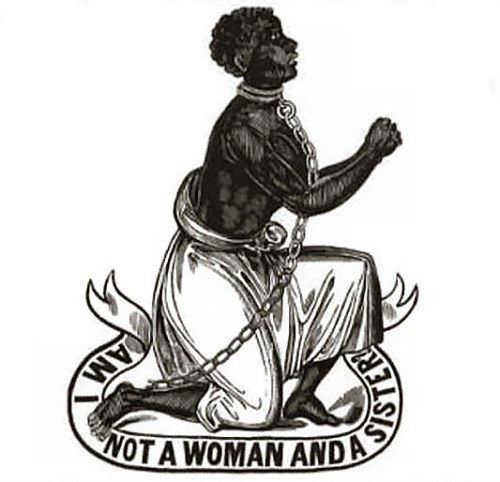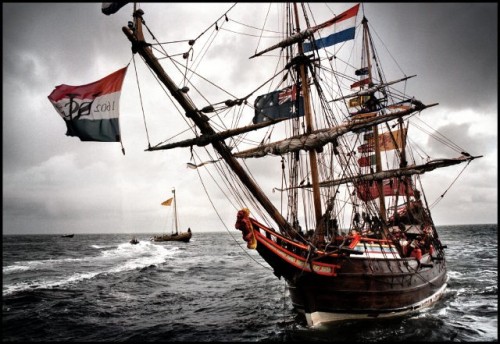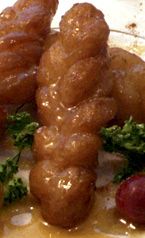CAPE TOWN: How slavery has influenced Cape cuisine, architecture, language and Cape Town traditions
by Niki Moore
 IT would be irresponsible to ignore our most significant event in decades even in a travel column, so this week’s effort is about the universal franchise – or rather, the lack of it.
IT would be irresponsible to ignore our most significant event in decades even in a travel column, so this week’s effort is about the universal franchise – or rather, the lack of it.
One group of South Africans never had a vote, never had any freedom at all, and yet their contribution to our society has been priceless. These are the slaves of the 17th century Cape Colony.
The Western Cape has its unique character because of slaves. There are still reminders of slavery around Cape Town: the Slave Lodge in Adderley Street (now a museum), the Slave Stone where slaves were displayed prior to being sold, the Slave Tree where they waited their turn to go on the block. But their influence goes much deeper than physical relics.
A brief history lesson
The very first consignment of slaves arrived at the Cape on the ship Amersfoort on March 28, 1658. They had been captured by the Dutch from a Portuguese slaver that was on its way to Brazil, filled with captives from Angola. This was the first of only three shiploads of slaves from Africa. The Dutch East India Company (VOC) controlled the Cape and had extensive holdings in the East Indies, so it made sense for slaves to come from Indonesia and Malaya. And they did – thousands of them. Within 50 years of the establishment of a victualling station at the Cape, slaves outnumbered free men.
 For 176 years (until slavery was abolished) the economy of the Cape depended on slaves. They worked in homes, on the farms, in shops and factories, on building sites. Officially, almost 7 000 slaves were brought to the new colony on VOC-sponsored slave ships, but many more arrived with Dutch East India officials returning home from Batavia. Because the Netherlands outlawed slavery, the officials sold their slaves in the Cape before embarking on the last leg of their return voyage home.
For 176 years (until slavery was abolished) the economy of the Cape depended on slaves. They worked in homes, on the farms, in shops and factories, on building sites. Officially, almost 7 000 slaves were brought to the new colony on VOC-sponsored slave ships, but many more arrived with Dutch East India officials returning home from Batavia. Because the Netherlands outlawed slavery, the officials sold their slaves in the Cape before embarking on the last leg of their return voyage home.
The life of a Cape slave
A slave’s lot was not a happy one. If they survived the journey (an ‘acceptable’ casualty rate for slaves was 15%), they died of overwork and malnutrion, torture and mistreatment. Many committed suicide. The hardy ones existed entirely at the whim of their masters – punished harshly, executed, married off or sold willy-nilly.
It is hard to think that anything good can come out of such sustained human misery, but amazingly, the Cape has some reminders of slavery that are testaments to the resilience of the human spirit.
Cape cuisine
 Slaves were cooks and kitchen staff, and they had a huge influence on Cape menus. Our national dishes such as bredie, koeksisters, bobotie, sosaties and tameletjie (toffee) all have Malay influence. C. Louis Leipoldt – a writer and keen cook – was the first Afrikaner to recognise and formalise Cape cuisine, a mixture of East and West.
Slaves were cooks and kitchen staff, and they had a huge influence on Cape menus. Our national dishes such as bredie, koeksisters, bobotie, sosaties and tameletjie (toffee) all have Malay influence. C. Louis Leipoldt – a writer and keen cook – was the first Afrikaner to recognise and formalise Cape cuisine, a mixture of East and West.
Cape architecture
Initially slaves only did menial work, but as slave populations stabilised they were trained in skilled occupations. Slaves were taught to build houses in the Dutch style, but they introduced many little Eastern flourishes in the ornate stone pediments and ornamental gardens. The Castle, Groot Constantia, Vergelegen and Simonsig were all built by slaves.
Cape slang
It is believed that Afrikaans developed as a ‘kitchen-language’ – a simplified form of Dutch that slaves learned in order to communicate with their Dutch-speaking masters. Proof of this, perhaps, is the fact that the first Afrikaans was written in Arabic script, and the language is enriched by many Arabic words such as piesang (banana), bredie (stew), baklei (fight), soebat (to plead).
Slave names
There are a surprising number of people who – whether they are aware of it or not – are descended from slaves. A dead give-away is the name: slaves were always given names by their owners, and unimaginative people would choose an easy name such as the month in which the slave was bought (Februarie, September), names of Roman heroes such as Cupido or Hannibal, biblical names such as Moses and Solomon, or whimsical names describing some attribute such as Fortuijn (if the slave was expensive), Witbooi (if they were light-skinned), or from their region of origin such as Basson, Claassen, or Snyman.
Slaves were Muslim and introduced their religion into the daily life of the Cape. The Cape Peninsula is ringed by 20 kramats, or holy sepulchres, that have fulfilled a 250-year-old prophecy that a ‘circle of Islam’ will be formed around Cape Town.
Cape slave traditions
Some current traditions in Cape Town date back to the days of slavery. On the Prophet Mohammed’s birthday women cut up orange leaves in the mosques. This slave tradition, known as ‘rampie-sny’, is unique to Cape Muslims.
The most enduring relic today is the Kaapse Klopse, or Tweede Nuwe Jaar. The slaves got this one day a year off, perhaps because their masters were too busy recovering from hangovers to need their services. Annually, on January 2, the descendants of slaves take to the city streets with bands and dances. The bright street parades and music are a joyous celebration of life over adversity, and a custom as unique to Cape Town as the noon gun and the flower-sellers on Adderley Street.
Now wasn’t that Quite Interesting ?
-
Used with kind permission of Niki Moore – a freelance feature writer and reporter currently living in St Lucia. You can read her original article “Throwing off the shackles” here.

Koeksisters, bobotie and sosaties are the BEST!!
Well, you have the Cape slaves to thank for those
Someone carrying the surname Basson or Claassen (given as examples of “slave names”) does not necessarily have any slave heritage:
Basson – Derived from the men’s name ‘Sebastiaan’. The progenitor (as the first person who brought the name to South Africa) was German.
Claassen – Meaning “Son of Claas/Nicolaas” (a common Northern European surname structure, as we well know). Dutch progenitor.
The Snyman name, on the other hand, did indeed have a slave progenitor… his father was “Anthony of Bengal”, presumably from Bengal. However, the name itself was a reference to clothes-making (“sny” = cut). So if there are regions called Basson, Claassen and Snyman, it’s coincidence.
(Source: Groot Afrikaanse Familienaamboek, C. Pama)
Also, I had to find it strange that the author would speak of a “first” Afrikaans text. The divergence between standard Dutch and the Afrikaans dialect was gradual and evolutionary, so how does one choose which piece of Afrikaans writing was the first? Back then, it probably would have been hard to distinguish between written Afrikaans and badly written Dutch anyway.
Thank you for your interesting input Dieter.
My mother’s uncle is a Basson and has a memory like an elephant. He gave us a family history lesson over the holidays and it turns out that my mother’s side of the family are descendants of a Anna Basson. She was the first slave to be freed by Jan van Riebeeck himself!
She became quite an important woman who married the first superintendant of Robin Island and spawned several offspring. We managed to find her house in Cape Town, which is now a popular Tai restaurant. They have, however, preserved several sections of the house and restored others to their original state (as far as possible).
It turns out that we are also related by blood to Jan Smuts and found our family name on a family tree displayed outside a history museum that used to be his main office/house. I forget the name of the museum (Jan Smuts Museum perhaps?) as this investigation too place a few years ago.
My father is currently doing his homework and tracing the family as far back as possible. It’s always interesting to know where you come from 🙂